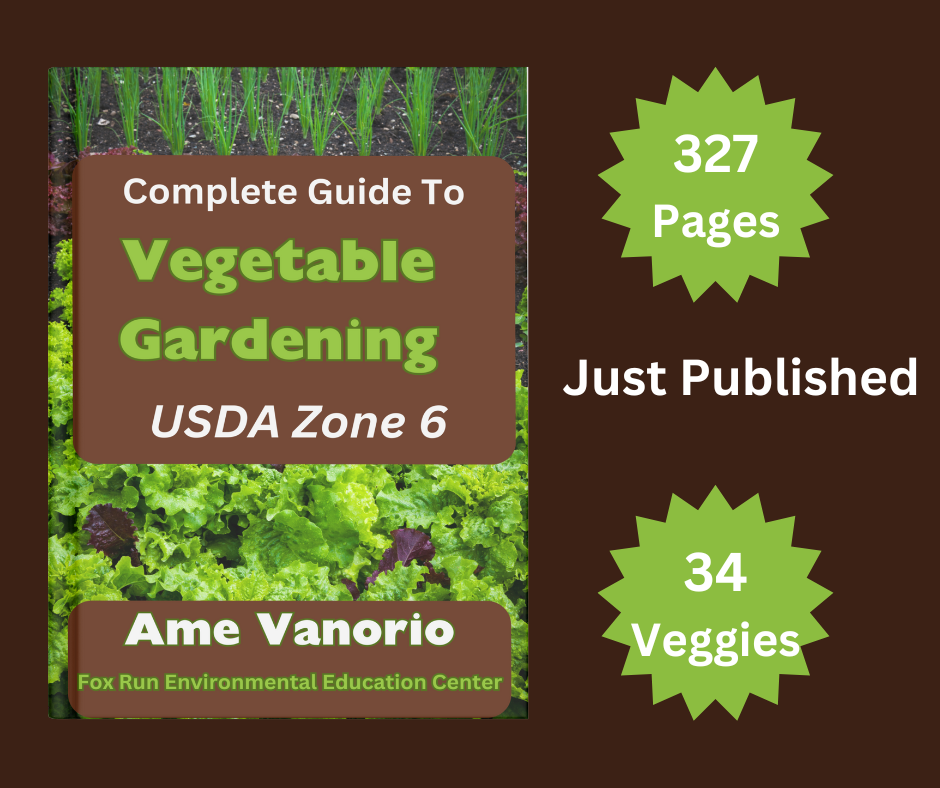Cucumbers are a refreshing treat from the garden on warm days; they are delicious for snacking or as an addition to salads and drinks. You can also use cucumbers to make pickles, which are a great way to preserve a harvest.
Cucumbers make a valuable addition to any garden and are easy to grow once you learn how. This guide answers all your questions.
Varieties
The varieties of cucumber you select will depend on how you plan to eat the fruits, and what kind of garden space you have.
Slicing cucumbers are best for fresh eating, others are excellent for pickling. There are also some varieties that can be used for both depending on when you harvest them.
Cucumbers grow on either a vine or a bush.
Vining Cucumbers
Vining cucumbers produce fruits on long rambling vines. They do best when trained to grow on a support structure like a trellis. Vining cucumbers are more common in part because they produce more fruits per plant.
Bush Cucumbers
Bush cucumbers are self-supporting. However, gardeners without space for trellises may want to consider bush varieties.
Here are a few varieties that grow well in Zone 6B:
Slicing
Marketmore 76
Marketmore 76 is a vine variety and a great option for fresh eating; this cucumber is popular because it is a reliable variety that consistently produces dark green, long fruits.
This is an open-pollinated hybrid, which means it is a stabilized hybrid of two varieties - open-pollinated hybrids can be used for seed saving.
Pickling
Boston
Boston Pickling Cucumber is a variety well-suited Zone 6b and tends to be a prolific producer of cucumbers that make for high-quality, crisp pickles.
Boston Pickling Cucumbers are also a vining variety. This is an heirloom variety, which can be used for seed saving.
Excelsior
Another good pickling variety is Excelsior which is vining and produces dark green cucumbers and grows well in greenhouses and hoop houses as it does not need pollinators.
Excelsior is an F1 hybrid which means any seeds saved will not produce the same type of cucumber.
Dual-purpose
Dar
Dar cucumber is a good variety for both slicing and pickling. Dar is a bush variety, so it works well for smaller gardens. It produces a short, bumpy cucumber with dark green and light green splotches. This is an heirloom variety and can be used for seed saving.
Lemon
Finally, one of my favorite varieties of cucumber is the Lemon, a cute round, yellow cucumber that does well for both fresh eating and pickling.
This vining variety has a nice, mild taste and has less risk of becoming bitter than other varieties. This is an open-pollinated hybrid, so it can be used for seed saving.
Check out my latest book -
All About Vegetable Gardening in Zone 6
Planting
Cucumbers are frost-tender and should only be planted after all danger of frost has passed.
I typically wait until after May 1 to plant cucumbers outside. Check out my article My Planting Schedule for Zone 6B.
Cucumbers can also be started indoors three weeks early, and then transplanted after the risk of frost has passed. This will give you a jump on the season.
The University of Kentucky recommends that small-scale growers and gardeners train vining cucumber tendrils on a trellis. This reduces the risk of disease as it keeps the plant’s leaves off of the moist soil. It also reduces cucumber rot as the fruits develop because the height keeps the cucumbers dry.
Spacing
Vining cucumbers should be spaced about 12 inches apart in rows along a trellis. Bush cucumbers should be spaces about 18-36 inches apart depending on the variety.
There are many ways that you can trellis your cucmbers. I like making a trellis by bending a piece of cattle panel in half and securing in the ground. It’s sturdy which works well for cucmbers and squashes.
Care
Water
Cucumbers are not drought-tolerant and need lots of water. Make sure to water deeply when there is not enough rainfall, and at regular intervals.
Drip irrigation gives cucumber plants a regular supply of water and keeps moisture off the plant’s leaves. This reduces water use and the risk of disease. Adding mulch to the garden on top of the soil will also help retain moisture.
Fertilizer
Cucumbers require moderately rich soil, so make sure to add amendments like organic compost to your gardens for the best results. Read my article on Composting 101 to learn how to make your own!
Problems
There are a variety of pests and diseases that can afflict cucumbers. One of the best preventative measures to avoid them is rotating which beds you plant cucumbers and other cucurbitae like pumpkins, squashes, and melons, each year.
One good way to prevent problems from disease is to select varieties that have strong resistance to common problems. Excelsior, for example, has high resistance to scab and target spot.
Powdery Mildew
If you see white powdery blotches forming on the leaves of your plants you most likely have this common fungus.
To control plant-resistant varieties and ensure good airflow with adequate spacing. Neem Oil is a good organic fungicide.
Cucumber Beetles
The dreaded cucumber beetle is common and widespread throughout Zone 6b and can cause serious damage to crops. The larvae eat and suck on the roots and stems. Adults forage on the leaves.
In addition, they carry the bacterium in their bodies that leads to bacterial wilt.
Organic controls include hand-picking, letting your chickens go after them, using row cover when they are young, and controlling with yellow sticky traps.
Some common pests for cucumbers include cucumber beetles and melon aphids. For varieties that don’t require pollination, one way to avoid pest damage is to protect cucumbers from pests by growing them in greenhouses or using row covers.
Row covers are a physical barrier that prevents pest bugs from being able to access the plants. They should be removed from outdoor plants when they start flowering because they need to be pollinated by insects.
Companion Planting
Beans and peas as good companion plants for cucumber, in addition to radishes, tomatoes, and cabbage. Planting sage nearby may harm cucumbers so it is best to avoid planting those together.
Harvesting and Storing
Once the cucumbers begin to ripen, it is good to pick them every other day to make sure they do not become too big. South Dakota State University Extension advises that pickling cucumbers are best picked around 4 inches long and slicing cucumbers are best when they are picked 6-12 inches long.
For many varieties, cucumbers should be picked when they are green, and turning yellow is a sign that they are no longer good to eat. This will vary somewhat by the variety - Lemon cucumbers, for example, are a round variety best picked when they are bright yellow and between 1.5 and 2.5 inches long.
Cucumbers should be stored in a cool place. They will stay fresh for up to two weeks when stored between 45-50 degrees Fahrenheit.
Seed Saving
Saving seeds from heirloom and open-pollinated varieties of cucumber is a great way to save money. However, it requires some work to ensure that the seeds you save will produce the cucumbers you want.
Cucumbers will cross-pollinate with other varieties if they are grown nearby. Seeds saved from cucumbers that cross-pollinated with other varieties or species will not produce the same variety of cucumbers as the parent plant and may be low quality.
If you are growing multiple varieties of cucumbers and want to save the seeds, the World Vegetable Center says that you identify a few blossoms to hand-pollinate from the same variety. Then slip a mesh bag over the blossom to ensure that pollen from other varieties will not enter the bag.
You can tie a ribbon or string onto those vines to mark which cucumbers to keep for seeds.
The Seed Savers Exchange recommends waiting until cucumbers have changed color to yellow or bright orange. Once the fruits begin to turn soft, they are ready to be harvested for seeds.
Mix the seeds and surrounding pulp with water and wait for one to three days before washing and drying the seeds. Then you can store them for up to five years in a cool, dry place.
Check out my YouTube Video for lots of gardening videos
Medicinal Use
Cucumbers have a number of medicinal benefits according to WebMD. They may help lower cholesterol, reduce swelling, and help with osteoarthritis.
In addition, placing cucumber on a burn offers relief. You can also place a slice of cucumber over your eyes to reduce puffiness.
Cooking
Cucumbers are great in salads and refreshing for a snack. Slice refrigerated and serve with yogurt or hummus.
You may not realize cucumbers are also wonderful cooked. Check out this recipe for Sauteed Cucumbers.
Below is a spicy Korean cucumber salad.
Author, Ame Vanorio, is the founder of FREEC and has been gardening organically in 6b for over 29 years.










I love green beans - fresh off the plant, in casseroles, and canned for winter meals. I have been growing green beans in USDA Zone 6B for over 25 years and I never get tired of trying new varieties and recipes.